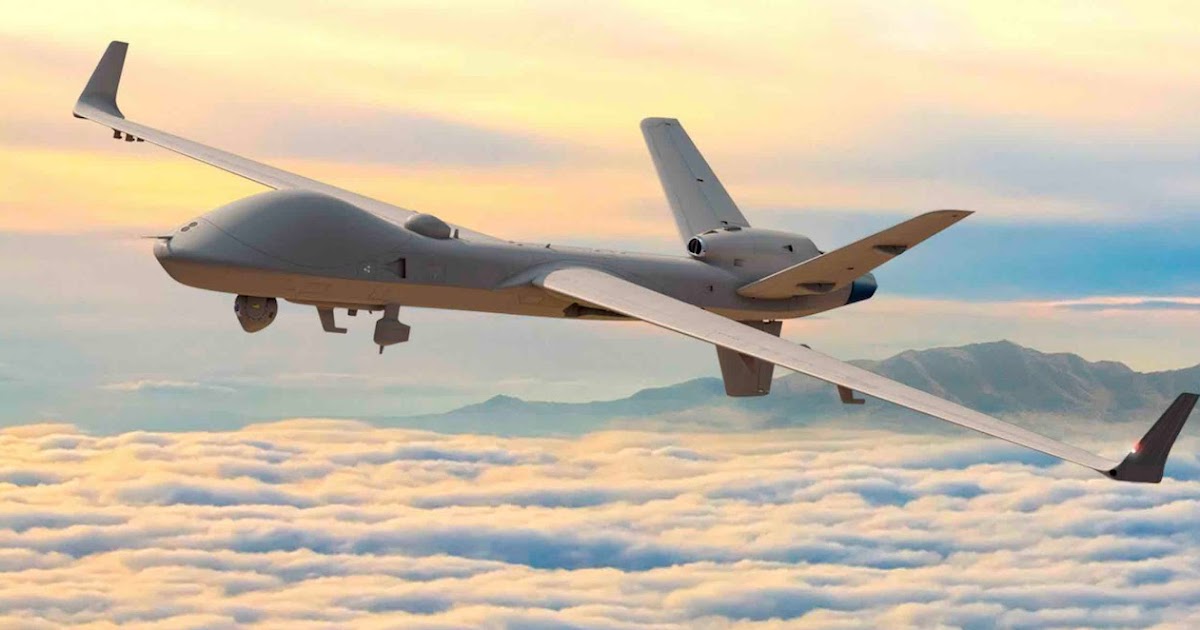
The Indian Ministry of Defense is pursuing the acquisition of 31 MQ-9B drones from the American company General Atomics
By Vikas Gupta
Defence News of India, 26 Jun 23
The defense cooperation highlight of Prime Minister Narendra Modi’s state visit to the United States last week was the agreement between the American company General Electric (GE) and the Indian aerospace giant , Hindustan Aeronautics Limited (HAL), to manufacture GE F-414 jet engines in India.
In addition to powering HAL’s Tejas Mark 2 fighter, the F-414 could also be chosen to power other combat aircraft acquired by the Indian Air Force (IAF) and Indian Navy.
The Indian HAL-GE plant could eventually produce nearly a thousand F-414 engines. In addition to 126 Tejas Mark 2 fighters, the IAF could choose these engines for 114 twin-engine general-purpose combat aircraft that it acquires on the international market.
The Indian Navy could also select the F-414 to power the 57 multi-role twin-engine carriers (MRCBF) it purchases for its aircraft carriers; and for an unknown number of Tejas twin-engine carrier deck fighters.
A power pack is also to be chosen for the futuristic Advanced Medium Combat Aircraft (AMCA) that the Defense Research and Development Organization (DRDO) is developing locally. The DRDO hopes to upgrade the indigenous Kaveri engine to power the twin-engine AMCA. However, if the Kaveri cannot meet the design challenges involved, an upgraded F-414 could be chosen for the AMCA.
A fighter engine costs about 20-30% of the total cost of the aircraft. In August 2021, GE and HAL signed a Rs 5,375 crore contract for 99 F-404-IN20 engines to power 83 Tejas Mark 1A fighters it is building for the IAF.
GE will build these F-404-IN20 engines at its US plant and supply them over-the-counter to HAL. In contrast, the more powerful and technologically advanced F-414 engines will be built in India with manufacturing technology provided by GE.
“This agreement to manufacture F-414 engines in India will allow for greater transfer of American jet engine technology than ever before. Leaders committed their governments…to support the advancement of this unprecedented co-production and transfer proposal. of technology,” reads the joint statement released after the summit talks between Indian Prime Minister Narendra Modi and US President Joe Biden.
It remains unclear whether the Modi-Biden deal and the GE-HAL deal will allow GE to transfer key jet engine technologies such as monocrystalline blades and combustor materials.
During President Barack Obama’s visit to India for Republic Day 2015, the two countries established a Joint Working Group (JWG) for cooperation in two high-tech areas: aircraft carrier design technology and gas turbine engine technology.
These two projects have made little progress. In 2019, GE stopped sharing sensitive intellectual property (IP). in October 2019, US Undersecretary of Defense Ellen Lord told the media that the JWG for fighter engines had been dropped.
“We couldn’t figure out what exportable technology (jet engine) would be useful to the Indians,” Lord said. “And we encountered a challenge in terms of US export controls,” she added.
Acquisition of MQ-9B drones
In order to keep track of enemy targets, the Ministry of Defense is continuing to acquire 31 MQ-9B drones from the American company General Atomics. Although these are tri-service assets, they will include 16 Sky Guardians for use on land and 15 Sea Guardians for use in ocean territories.
The MQ-9B is the next generation of Remotely Piloted Aircraft Systems (RPAS), which provides persistent Intelligence, Surveillance and Reconnaissance (ISR) around the world, extending the Indian Army’s ability to observe and to hit distant targets.
This drone flies over the horizon for up to 40 hours in all weathers. It can be safely integrated into civil airspace, allowing joint forces and civil authorities to provide real-time situational awareness anywhere in the world, day or night.
The drone’s avionics and sensors include Lynx multi-mode radar, an advanced electro-optical/infrared (EO/IR) sensor, and automatic takeoff and landing.
Sky Guardian and Sea Guardian drones enable multi-domain missions, including humanitarian assistance and disaster relief (HADR), search and rescue (SAR), border enforcement and early warning airborne (AEW).
The Sea Guardian additionally provides anti-surface and anti-submarine warfare mission kits, as well as airborne mine countermeasures.
These High Altitude Long Endurance (HALE) drones are procured through the Foreign Military Sales (FMS) channel. The Pentagon has indicated an estimated cost of $3,072 million, but the final price remains to be negotiated.
The Indian Ministry of Defense states: “(We) will compare the cost of acquisition with the best price offered by General Atomics to other countries. Procurement is in progress and will be completed according to the planned procedure.
As part of the procurement, General Atomics will establish a “comprehensive global MRO facility” in India to support [India’s] long-term goals to build indigenous defense capabilities.
Base and Repair for US Ships
Modi and Biden also hailed India’s emergence as “a hub for the maintenance and repair of forward-deployed U.S. Navy assets and the conclusion of major ship repair agreements with shipyards. Indian naval forces”.
This will allow the US Navy to expedite contracting for mid-term and urgent repair of its warships deployed in the Indian Ocean and Western Pacific.
In their “Defence Industrial Roadmap”, the two countries agreed to work together for the establishment of logistics, repair and maintenance infrastructure for aircraft and ships in India.
In sum, Modi and Biden have affirmed a view of India and the United States as among the world’s closest partners.
“The all-encompassing and strategic partnership between India and the United States is rooted in a new level of trust and mutual understanding and enriched by the warm ties of family and friendship that inextricably bind our countries,” the statement said. joint.
[ENDS]
The F414 is also a potential engine for emerging platforms such as the Korean KF-X and other potential applications.
|
|
F404-IN20 |
F414-GE-400; F414G, F414-INS6 |
Improved engine F414 |
|||
|
|
English |
WHETHER |
English |
WHETHER |
English |
WHETHER |
|
|
|
|
|
|
|
|
|
thrust class |
19,000 pounds |
84 kN |
22,000 pounds |
98kN |
26,000 pounds |
116kN |
|
Length |
154″ |
391cm |
154″ |
391cm |
154″ |
391cm |
|
Air flow |
153 lbs/s |
70kg/s |
170 lbs/s |
77.1kg/s |
187 lbs/s |
85kg/s |
|
Max diameter |
35″ |
89cm |
35″ |
89cm |
35″ |
89cm |
|
Inlet diameter |
28″ |
71cm |
31″ |
79cm |
31″ |
79cm |
|
Pressure ratio |
28:1 |
28:1 |
30:1 |
30:1 |
30:1 |
30:1 |
|
Thrust-weight class |
|
|
9:1 |
9:1 |
9:01 |
9:01 |
|
lester |
2365 pounds |
1,072 kilograms |
2365 pounds |
1,072 kilograms |
|
|
|
|
|
|
|
|
|
|






